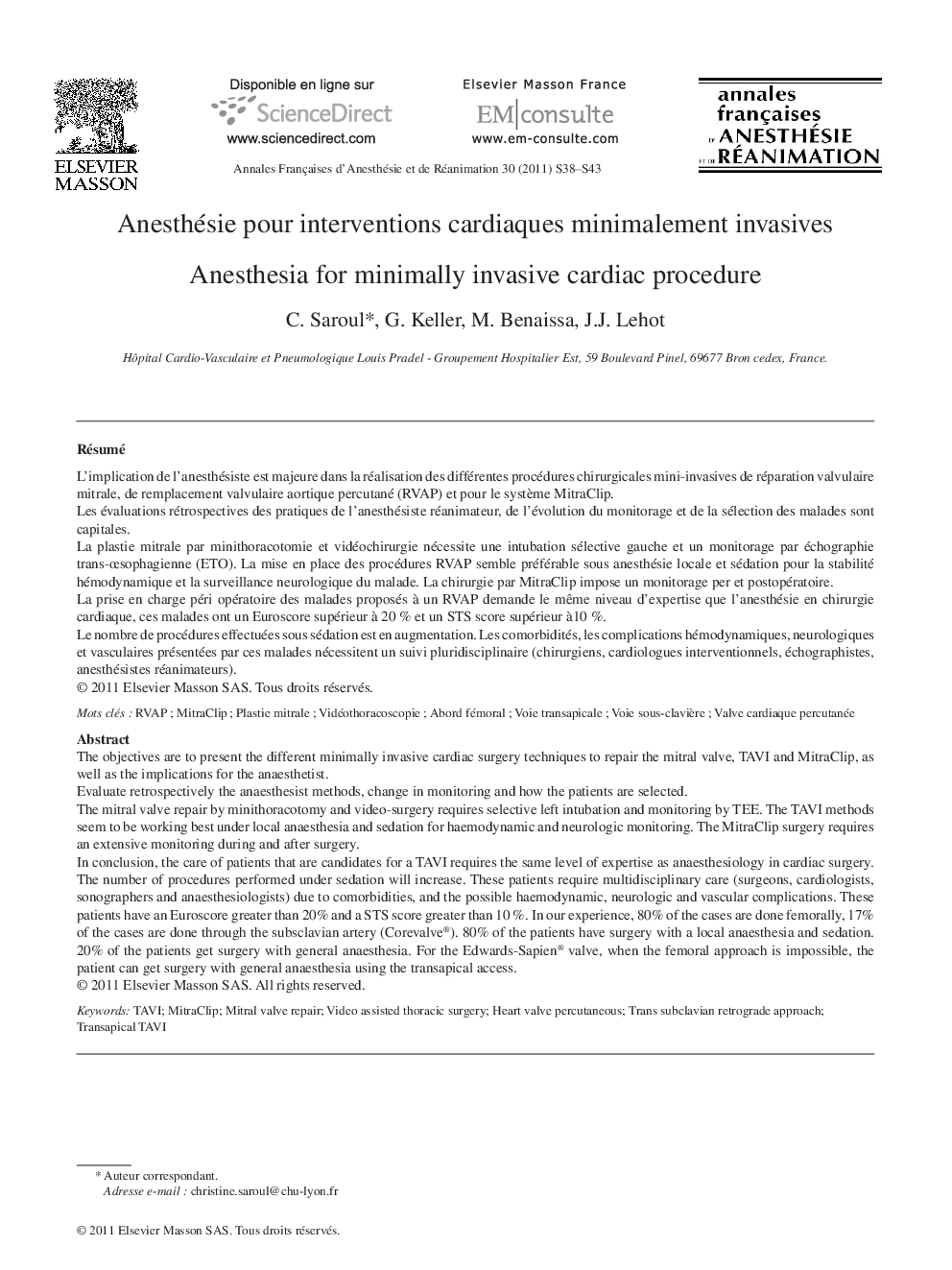| کد مقاله | کد نشریه | سال انتشار | مقاله انگلیسی | نسخه تمام متن |
|---|---|---|---|---|
| 2746256 | 1148867 | 2011 | 6 صفحه PDF | دانلود رایگان |

RésuméL’implication de l’anesthésiste est majeure dans la réalisation des différentes procédures chirurgicales mini-invasives de réparation valvulaire mitrale, de remplacement valvulaire aortique percutané (RVAP) et pour le système MitraClip.Les évaluations rétrospectives des pratiques de l’anesthésiste réanimateur, de l’évolution du monitorage et de la sélection des malades sont capitales.La plastie mitrale par minithoracotomie et vidéochirurgie nécessite une intubation sélective gauche et un monitorage par échographie trans-oesophagienne (ETO). La mise en place des procédures RVAP semble préférable sous anesthésie locale et sédation pour la stabilité hémodynamique et la surveillance neurologique du malade. La chirurgie par MitraClip impose un monitorage per et postopératoire.La prise en charge péri opératoire des malades proposés à un RVAP demande le même niveau d’expertise que l’anesthésie en chirurgie cardiaque, ces malades ont un Euroscore supérieur à 20% et un STS score supérieur à10%.Le nombre de procédures effectuées sous sédation est en augmentation. Les comorbidités, les complications hémodynamiques, neurologiques et vasculaires présentées par ces malades nécessitent un suivi pluridisciplinaire (chirurgiens, cardiologues interventionnels, échographistes, anesthésistes réanimateurs).
The objectives are to present the different minimally invasive cardiac surgery techniques to repair the mitral valve, TAVI and MitraClip, as well as the implications for the anaesthetist.Evaluate retrospectively the anaesthesist methods, change in monitoring and how the patients are selected. The mitral valve repair by minithoracotomy and video-surgery requires selective left intubation and monitoring by TEE. The TAVI methods seem to be working best under local anaesthesia and sedation for haemodynamic and neurologic monitoring. The MitraClip surgery requires an extensive monitoring during and after surgery.In conclusion, the care of patients that are candidates for a TAVI requires the same level of expertise as anaesthesiology in cardiac surgery. The number of procedures performed under sedation will increase. These patients require multidisciplinary care (surgeons, cardiologists, sonographers and anaesthesiologists) due to comorbidities, and the possible haemodynamic, neurologic and vascular complications. These patients have an Euroscore greater than 20% and a STS score greater than 10%. In our experience, 80% of the cases are done femorally, 17% of the cases are done through the subsclavian artery (Corevalve®). 80% of the patients have surgery with a local anaesthesia and sedation. 20% of the patients get surgery with general anaesthesia. For the Edwards-Sapien® valve, when the femoral approach is impossible, the patient can get surgery with general anaesthesia using the transapical access.
Journal: Annales Françaises d'Anesthésie et de Réanimation - Volume 30, Supplement 1, May 2011, Pages S38-S43